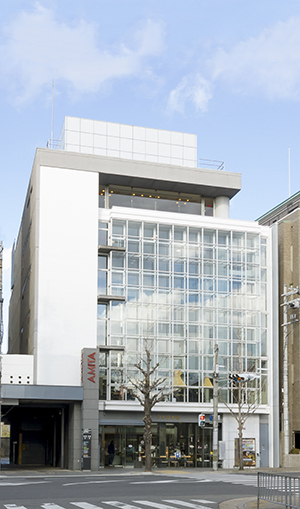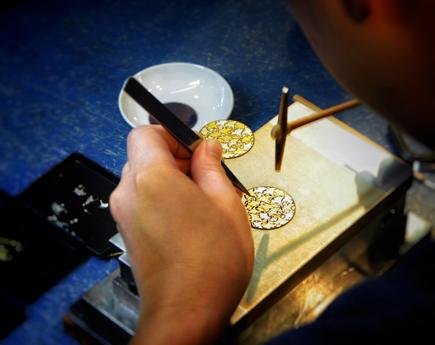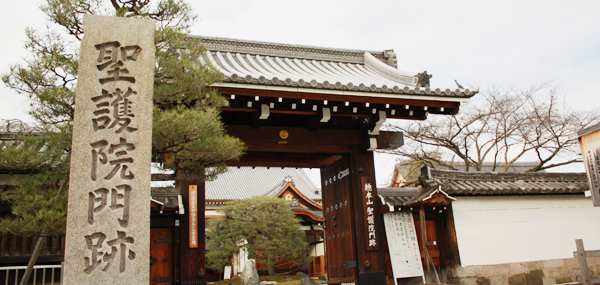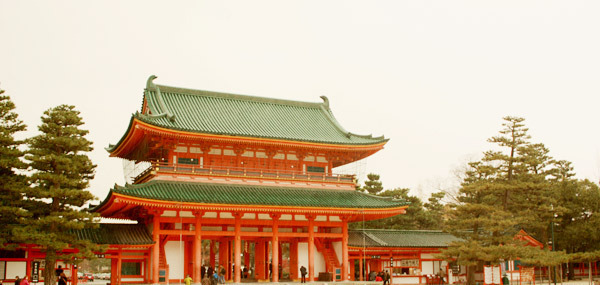
In Kyoto, the old capital of Japan, tradition and culture were born and cultivated. During your visit to this historical capital, why not take the time to experience something unique to Kyoto and Japan, either by yourself, or with family or good friends?
At the Kyoto Handicraft Center, we have selected not only traditional craft-work goods, but goods which are also unique to Japan and Kyoto. We take pride in presenting our selection to customers from Japan and abroad alike.
We welcome you to relax in any of our three dining areas, suitable for both small and large groups. Influenced by the seasons, our food is served with a specific ‘Kyoto’ undertone. We are happy to prepare meals to cater for our customers’ needs or requests.
Whether you are in Kyoto for study, or on a holiday with friends or family, we believe visitors of any background will enjoy crafting and creating their own goods. This can be a great way to unwind and build fond memories of your visit.
This building opened its doors in 1967 in the Higashiyama/Okazaki area, popular all year round with tourists. At this time there were already a number of attractions in the area, such as museums and zoos, institutions for cultural exchange, shrines, and temples, all with long histories. Since our creation, we are glad to welcome visitors from all over the world.
In October 2007, the Kyoto Handicraft Center received approval from the Japanese Tourist National Organisation (JTNO), and the "Visit Japan Campaign Information Desk" opened. It aids visitors in enjoying a pleasant visit by providing transport information and recommendations for sightseeing spots.
“Japan's and Kyoto's Finest” are collected here, and if you want to make good memories for your own travels or share the travel with a friend or your family, please be sure to visit our shops. We look forward to welcoming you!

Inlay is one of Japan's oldest traditional crafts and has a history of over 1000 years. In this long history of inlay art in Japan, Kyoto’s distinct style stands out from the rest, in that metals like pure gold and silver are inlayed into boxes, creating delicate works of art with beautiful shining gold and silver detail on jet-black surfaces.
From the Muromachi period until the Edo Period, these Kyoto inlays were popularly used as ornaments on Japanese swords and armour, and many famous craftsmen used the same technique. At the dawn of the Meiji Period, artists such as Komai Otorojiro, with their extensive knowledge of Kyoto inlay techniques, crafted vases -amongst other things- aimed at foreigners; objects which received international acclaim at world exhibitions overseas.
At the time of the Pacific War, the Kyoto inlay artisans left their posts. However, it is the mission of the Kyoto Handicrafts Center and its founder, the late Amita Shintaro, to assemble such craftsmen, to promote their charming art and support their work.
At the Kyoto Handicraft Center, one will find superb traditional crafts, such as Kyoto Inlay goods, woodblock prints, and Japanese dolls made by local craftsmen. The Kyoto Handicraft Center started as an international shopping center where one can marvel at and acquire such arts, but soon the delicate Kyoto inlays became a popular attraction for distinguished people both abroad and within Japan.

Shogoin is perhaps most famous for being the birthplace of one of Kyoto's most prominent souvenirs, the Yatsuhashi.
Shogoin prospered since the Heian Period as a center of governance by retired emperors, and in modern times it came to host a collection of cultural facilities and laid foundations for the modernisation of cultural exchange. It is situated on the north side of Marutamachi Street in the Okazaki area.
Places such as the Lake Biwa Canal, which has great value as a testament of modernisation, Heian Jingu, and Nanzen Temple are rich in Kyoto's history and flair. In this tranquil area full of opulent greenery, the natural scenery overflows with colour and emotion and is enjoyable in any season.
Other than the museum at the Lake Biwa Canal, there are museums such as the Kyoto Municipal Museum of Art and the National Museum of Modern Art, as well as a zoo and library, for you to enjoy alone or with your family. The area is also dotted with sightseeing spots like Heian Jingu, Nanzen Temple, and Murin-an Garden.
The Kyoto Handicraft Center is situated in Shogoin, which is well connected with the charming Okazaki area. Even large tour busses can enter and park, and refreshments and tea are available to help visitors make the most of their visit to Kyoto.

